
The Ohio River is a 981-mile (1,579 km) long river in the United States. It is located at the boundary of the Midwestern and Southern United States, flowing in a southwesterly direction from western Pennsylvania to its mouth on the Mississippi River at the southern tip of Illinois. It is the third largest river by discharge volume in the United States and the largest tributary by volume of the north-south flowing Mississippi River, which divides the eastern from western United States. It is also the 6th oldest river on the North American continent. The river flows through or along the border of six states, and its drainage basin includes parts of 14 states. Through its largest tributary, the Tennessee River, the basin includes several states of the southeastern U.S. It is the source of drinking water for five million people.

Rivesville is a town and former coal town in Marion County, West Virginia, United States. The population was 830 at the 2020 census.
The Henry Laurence Gantt Medal was established in 1929 by the American Management Association and the Management section of the American Society of Mechanical Engineers for "distinguished achievement in management and service to the community" in honour of Henry Laurence Gantt. By the year 1984 in total 45 medals had been awarded.
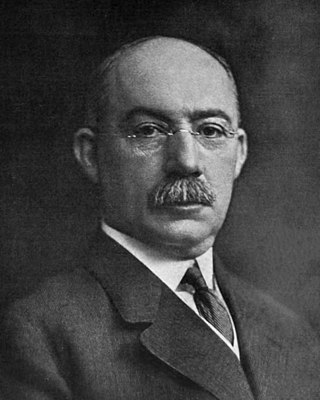
Henry Laurence Gantt was an American mechanical engineer and management consultant who is best known for his work in the development of scientific management. He created the Gantt chart in the 1910s.
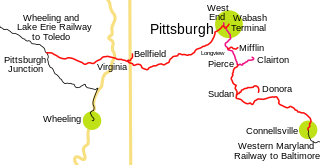
The Pittsburgh and West Virginia Railway was a railroad in the Pittsburgh, Pennsylvania, and Wheeling, West Virginia, areas. Originally built as the Wabash Pittsburgh Terminal Railway, a Pittsburgh extension of George J. Gould's Wabash Railroad, the venture entered receivership in 1908 and the line was cut loose. An extension completed in 1931 connected it to the Western Maryland Railway at Connellsville, Pennsylvania, forming part of the Alphabet Route, a coalition of independent lines between the Northeastern United States and the Midwest. It was leased by the Norfolk and Western Railway in 1964 in conjunction with the N&W acquiring several other sections of the former Alphabet Route, but was leased to the new spinoff Wheeling and Lake Erie Railway in 1990, just months before the N&W was merged into the Norfolk Southern Railway.

Albert Fink was a German-born civil engineer who worked in the United States. He is best known for his railroad bridge designs, which helped revolutionize the use of iron for American railroad bridge construction. He devised the Fink truss and many truss bridges, especially the Fink-Type Truss Bridge.
John Gordon Inglis B.A.Sc. was a Canadian electrical engineer and transit manager.
Samuel Diescher was a prominent Hungarian-American civil and mechanical engineer who had his career in the United States. After being educated at universities in Karlsruhe and Zurich in Europe, he immigrated to the United States in 1866 and settled in Cincinnati, Ohio. There he supervised construction of his first inclined plane. He later moved to Pittsburgh, Pennsylvania, where he worked with John Endres on the Monongahela Incline (1870), the first passenger incline in the city.


The Market Street Bridge is a suspension bridge connecting Market Street in Steubenville, Ohio and West Virginia Route 2 in Follansbee, West Virginia over the Ohio River. As a project of the Steubenville Bridge Company, it was constructed in 1905 by the Ohio Steel Erection Company, the framework was created by the Penn Bridge Company, and the original steel was done by Jones and Laughlin Steel Company and Bethlehem Steel. The bridge spans a length of 1,794 feet (547 m) with a width of 20.7 feet (6.3 m). As of 2002, the average daily traffic was estimated around 15,000 vehicles. It was listed on the National Register of Historic Places in 2019.

Rawleigh Warner Jr. was an American business executive, who was president of Mobil from 1965 to 1969 and chairman and chief executive officer from 1969 to 1986. He was recipient of the 1984 Henry Laurence Gantt Medal.

Henry Wallace Clark was an American consulting engineer, known for popularizing the work of Henry Gantt with his 1922 work "The Gantt chart; a working tool of management".
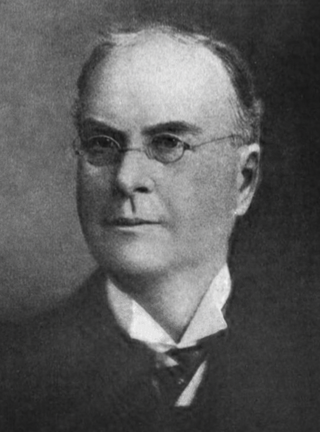
Thayer Melvin was an American lawyer, politician, and judge in the U.S. state of West Virginia. Melvin served as the fourth Attorney General of West Virginia from January 1, 1867, until July 1, 1869, and twice served as the presiding circuit judge of West Virginia's First Judicial District in the state's Northern Panhandle.
The 1903 Western University of Pennsylvania football team was an American football team that represented Western University of Pennsylvania as an independent during the 1903 college football season.
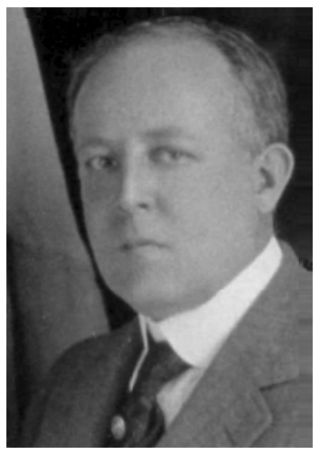
Horace Bushnell Cheney was an American administrator, who was general manager and vice-president of Cheney Brothers Silk Manufacturing Company, in the nowadays called Cheney Brothers Historic District.

William Loren Batt was an American mechanical engineer, and president SKF Industries, Inc., awarded the Order of Vasa in 1923, the Henry Laurence Gantt Medal in 1940, and the Hoover Medal in 1951.
Alvin Earl Dodd was an American consulting engineer and president of the American Management Association, known as industry expert and recipient of the Henry Laurence Gantt Medal in 1944
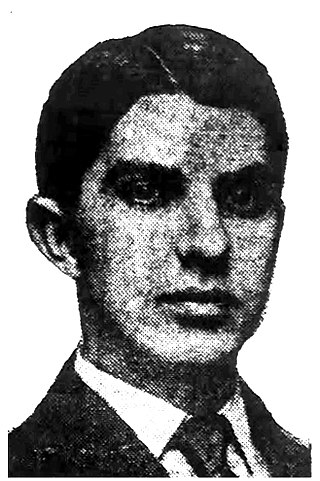
Frank Henry Neely was an American mechanical engineer, consulting engineer, and President of Rich's Department Store in Atlanta. He is known for his civic activities in Atlanta, and as recipient of the Henry Laurence Gantt Medal in 1952.

Harold Francis Smiddy was an American engineer, business manager, and management consultant, known as the 17th president of General Electric, and recipient of the Henry Laurence Gantt Medal in 1957.














